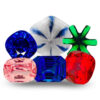Pakistan’s Gems, Mines and Markets
An Overview by Jeffery Bergman, SGC SSEF
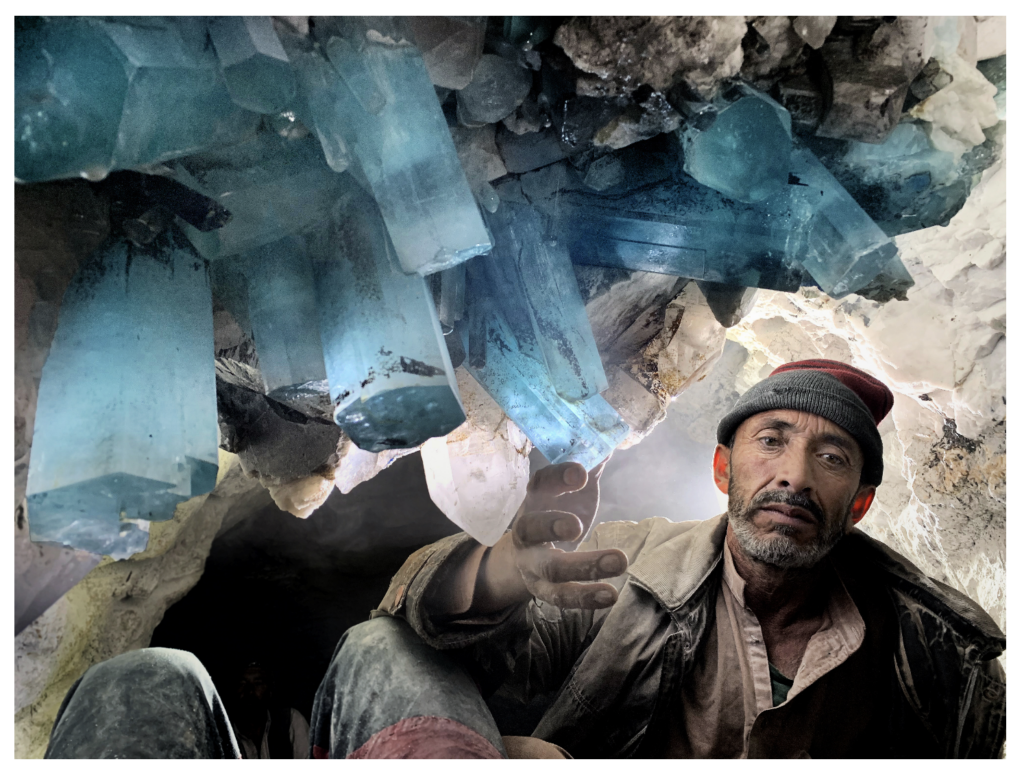
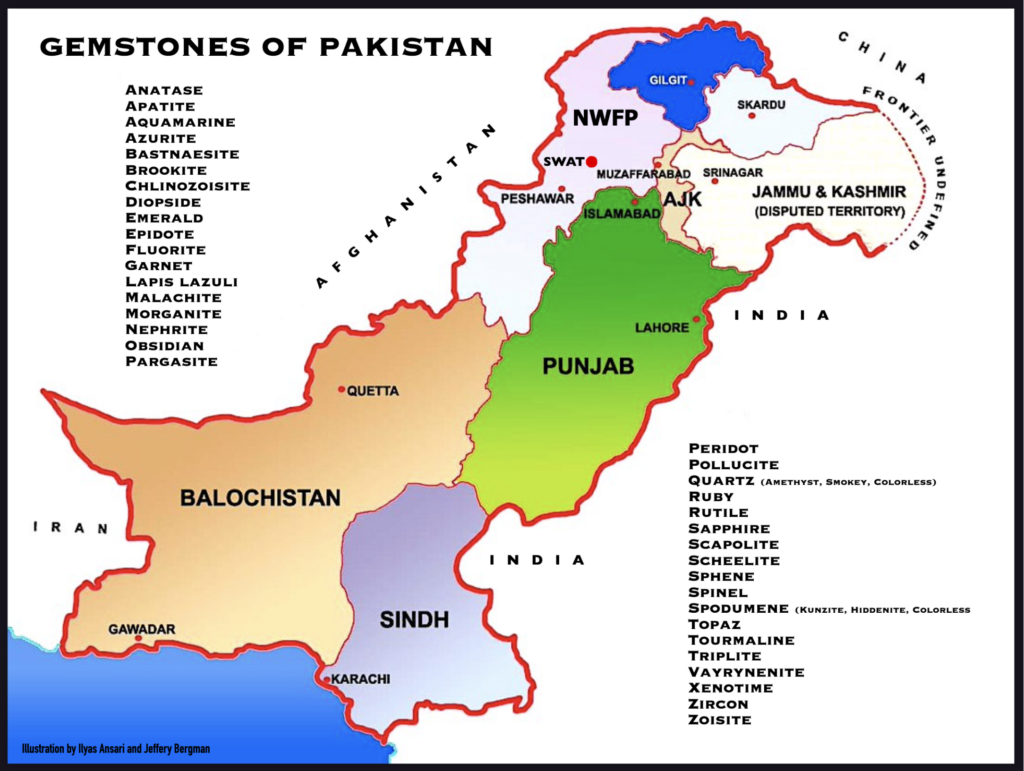
Considered to be among the finest mineral specimens ever discovered, it is “a huge cluster of nearly 30 pristine aquamarine crystals aesthetically arranged and intermixed with beautiful quartz crystals, all on matrix of white albite and microcline” (Ref. 10).
Graciously hosted by Bangkok-based gem and mineral dealer Mohammad Ayub of Pretty Little Gem and Shah Khalid, CEO of Khalid Minerals in Peshawar, we set out from our arrival airport in Islamabad on a gem and mineral adventure of a lifetime. Our visits included the Namak Mandi market in Peshawar, pink topaz hunting at Katlang in the Mardan District, the emerald mines and market in Swat, the Skardu mines and the Rundu Gems Market-the largest mineral specimen and rough gemstone market in the city of Skardu-and Goyungo in the Shigar Valley, where the spectacular King of Kashmir aquamarine specimen was unearthed.
kunzite, hiddenite, sapphire, spinel, sphene, zircon and a host of other gems and minerals. Also of note are the stunning and exceptionally rare collector gems such as vivid orange triplite as well as väyrynenite, the envy of many a padparadscha sapphire.
In 2019, news stunned the gem and mineral world with the discovery of the magnificent King of Kashmir aquamarine specimen found in the Biangsapi Gon mine at Nyet Bruk, Goyungo, next to the Braldu River in the Shigar valley, Gilgit-Baltistan, in Pakistan’s Kashmir region.
The Gems
Pakistan, formerly a part of western India before partition in 1947, has a rich history as a source of many fine gemstones and exceptional mineral specimens: vivid green emeralds of Swat; pink and purplish topazes of Ghundu, Katlang; aquamarine, topaz and tourmaline of Gundu in the Shigar valley; rubies and sapphires of Hunza, Shigar and Azad, Kashmir; kunzite, peridot, sphene, spinel, and tourmaline, along with rare collector gems such as triplite and vayrynenite of the Skardu area; and many more. Pakistan has something to offer every gemstone and mineral lover.Gems of one sort or another are mined in every province, but the far north is the most prolific region as a source for a wide variety of GIA A Chart, B Chart, and several off-chart yet popular ultra-rare collector gems. The extensive list of gems mined in Pakistan includes anatase, apatite, aquamarine, azurite, bastnaesite, brookite, chlinozoisite, diopside, emerald, epidote, fluorite, garnet, lapis lazuli, malachite, morganite, nephrite, obsidian, pargasite, peridot, pollucite, quartz, ruby, rutile, sapphire, scapolite, scheelite, sphene, spinel, spodumene, topaz, tourmaline, triplite, vayrynenite, zircon, zoisite and several other uber-obscure rare minerals occasionally faceted for the collector market.
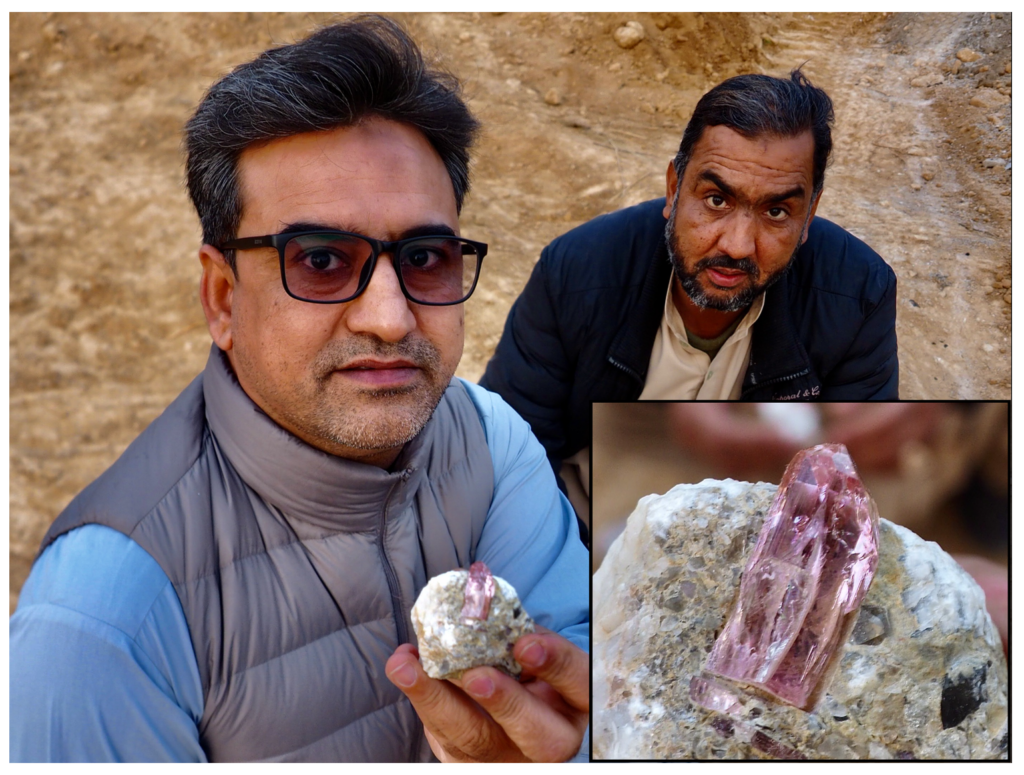
The Mines
The major gemstone and mineral specimen mines of Pakistan are found in five regions of the far north, home to K2, the second tallest mountain in the world. They include NWFP-North West Frontier Province bordering Afghanistan (Gilgit and Skardu bordering China), AJK (Asad & Jammu Kashmir), and the Jammu and Kashmir disputed territory bordering China and India.
The Katlang mine, renowned for its sweet baby pink and purplish pink topaz is in Mardan district between Peshawar and Swat in NWFT. The Nangimali, Batakundi and Basil ruby and sapphire mines are in Azad & Jammu Kashmir.
Throughout Skardu, Shigar, Hunza and Gilgit in the Gilgit–Baltistan region in Pakistan’s side of Kashmir, hundreds of small mines produce quartz, topaz, aquamarine, ruby, tourmaline, peridot,




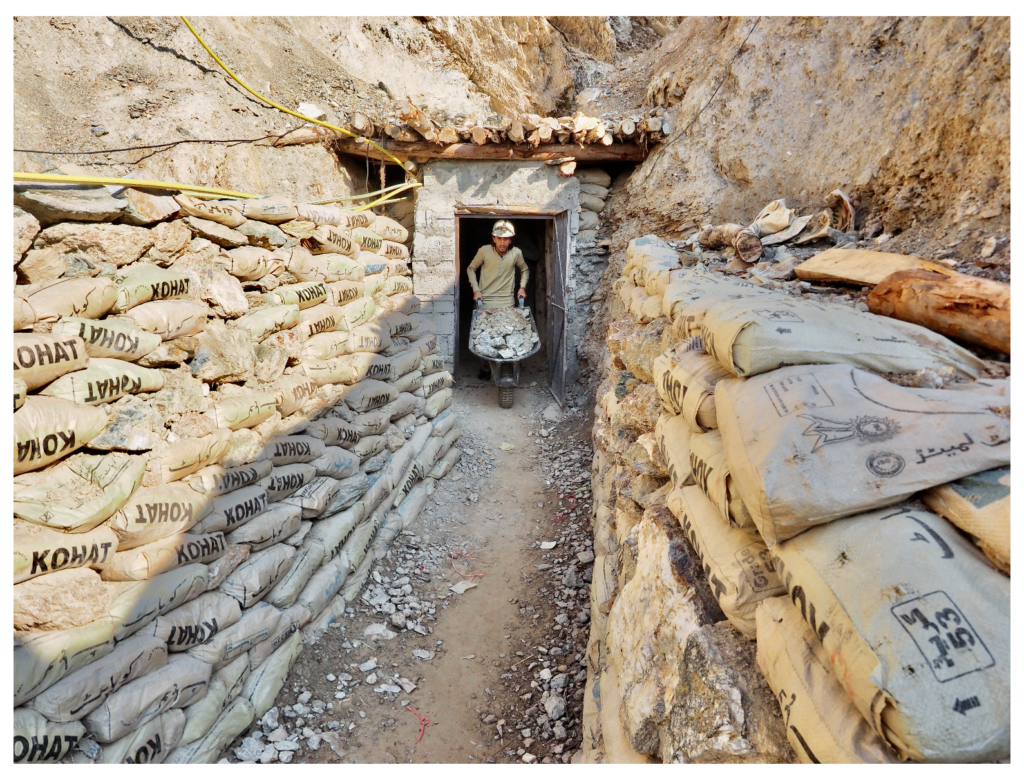
Now on display at the Houston Museum of Natural Sciences (Ref.11), this 440-pound extraordinary creation of nature was extracted by a team of experts sent by world-renowned mineral collector and dealer Daniel Trinchillo of Fine Minerals International, and has been re-named the Ann Hamman Aquamarine.
The most famous mines in Pakistan are undoubtedly the Mingora emerald deposits in the Swat District of the Khyber Pakhtunkhwa Province. For more than 2,500 years, emeralds have been mined from the Swat valley, with examples found among the ruins of an ancient Roman settlement in France (Ref. 16). Besides Mingora, the Swat emerald deposit has four other major mining areas; Charbagh, Gujar Killi, Makhad, and Shamozai, where we were fortunate to have been given access to one of the newly productive tunnels.

The Markets
Prior to the Soviet invasion of Afghanistan, the coastal port city of Karachi on the Arabian Sea was once the biggest market for faceted and rough gemstones in Pakistan. The war shifted the market to Peshawar which became the new hub of the cut and rough gemstones and mineral specimens trade. Afghanistan’s long and porous border with Pakistan facilitates gems and traders coming to Peshawar, where locals estimate that perhaps half of the dealers are Afghani.
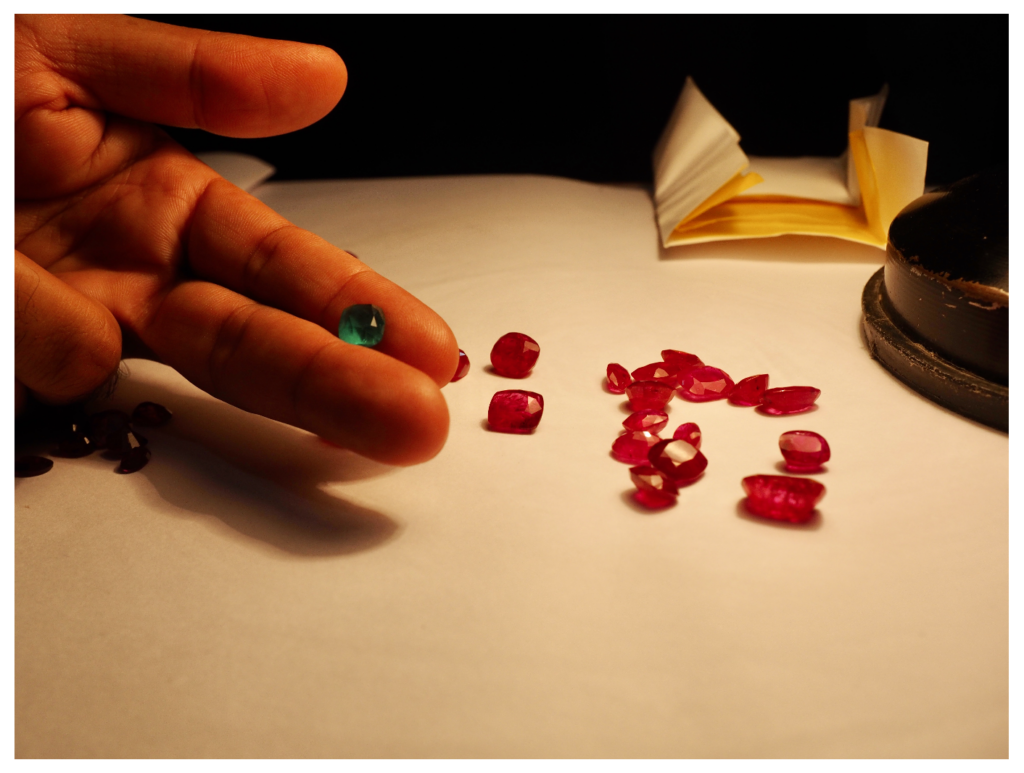
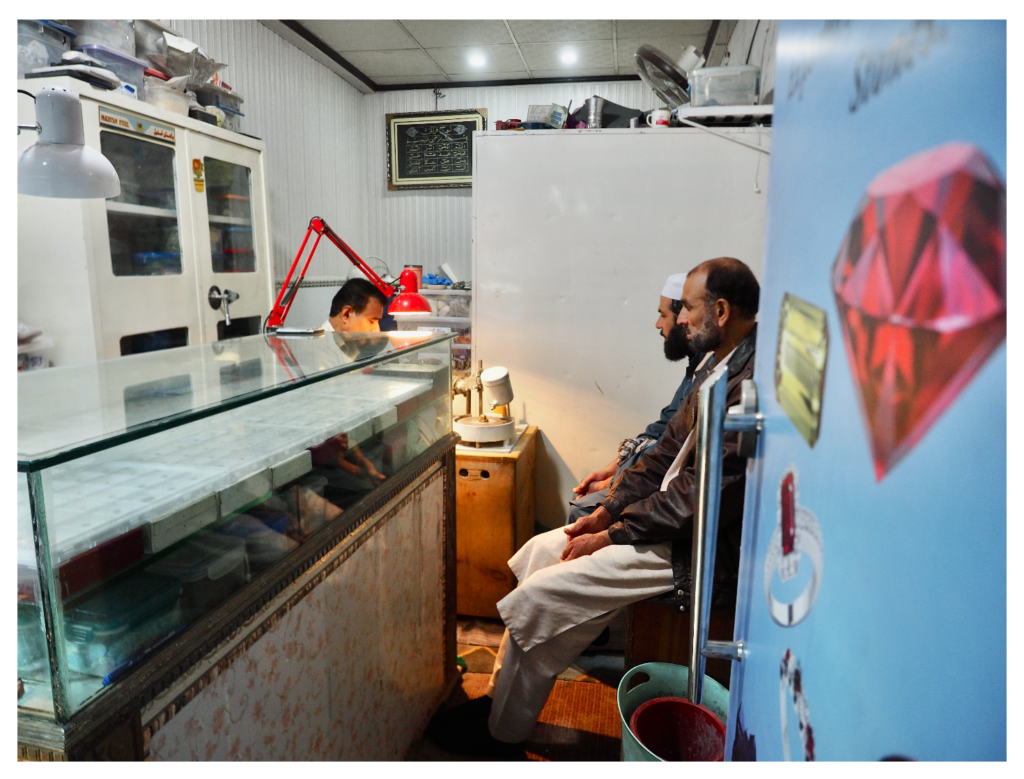
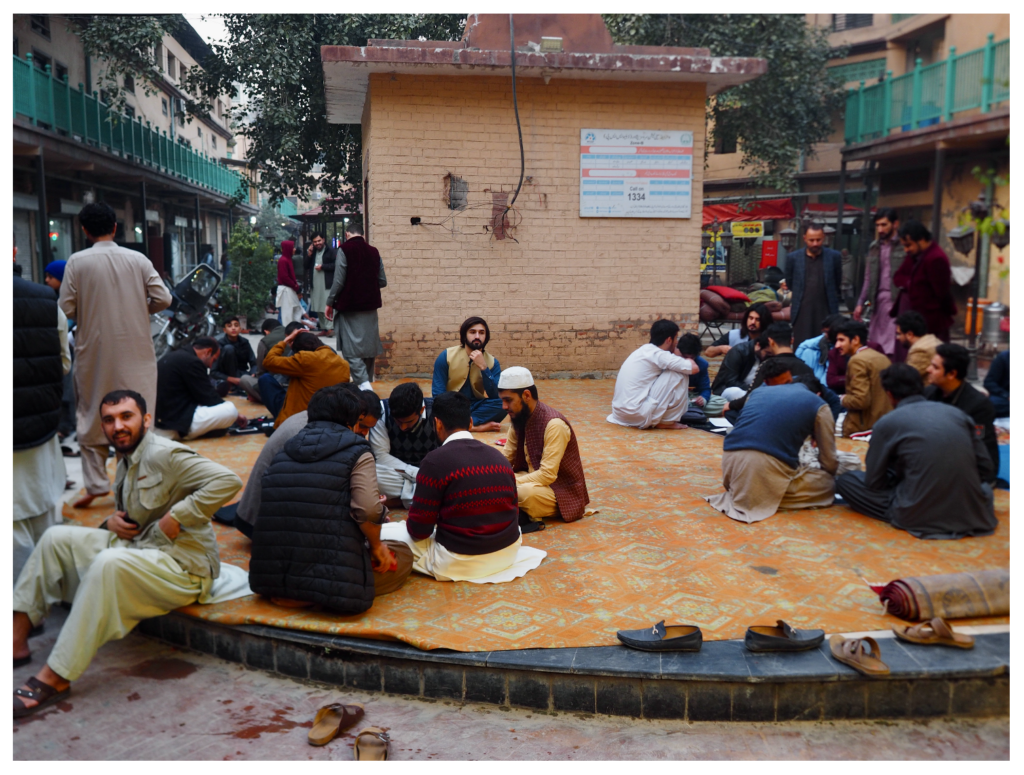
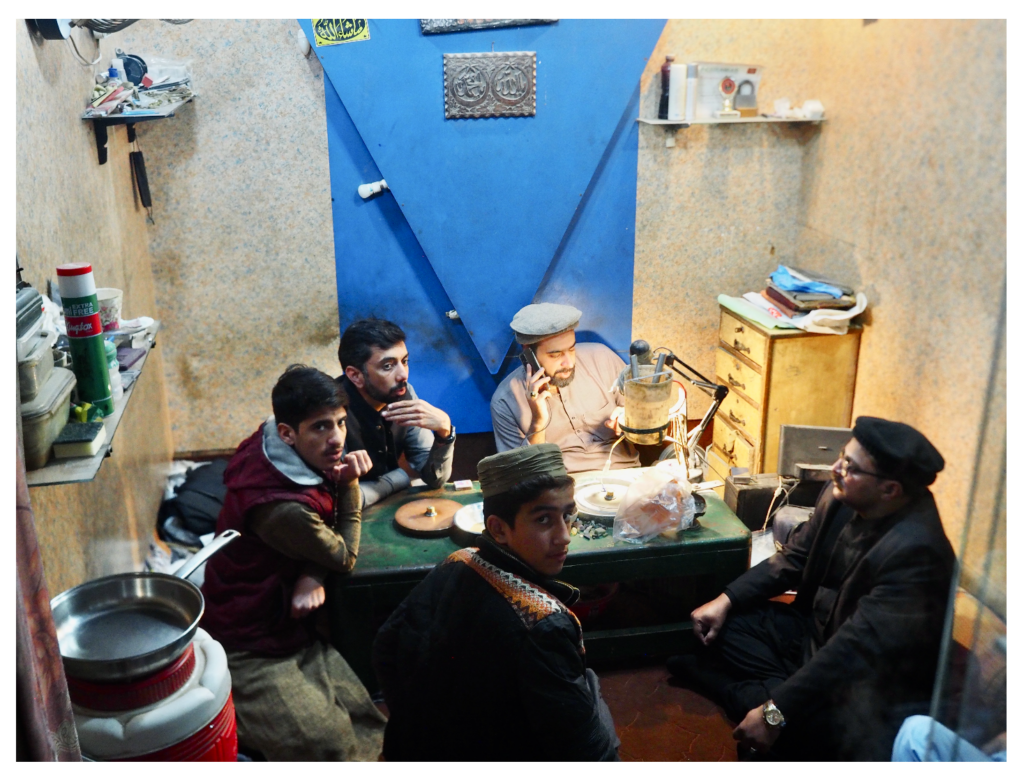
Historically a salt market, Peshawar’s Namak Mandi has evolved into Pakistan’s largest and most important cut and rough gemstone and mineral specimen market. By day, young entrepreneurs armed with photo and video-capable smart phones have disrupted the traditional gemstone supply chain by selling directly to mostly European and American end users on Facebook and Instagram. Morphing into a foodies’ dreamland at night, the market serves up what many consider the best lamb karahi and barbecued tikka in Pakistan.
Hundreds of small shops line the alleys of Namak Mandi, some are rather modern with chairs and display cases, while others remain traditional where traders sit on carpets and view gems from papers and ziplock bags. Many are also small cutting workshops such as that of lapidary artisan Mr. Zakir Khan, widely considered the best gem cutter in Peshawar’s Namak Mandi gem and mineral market.
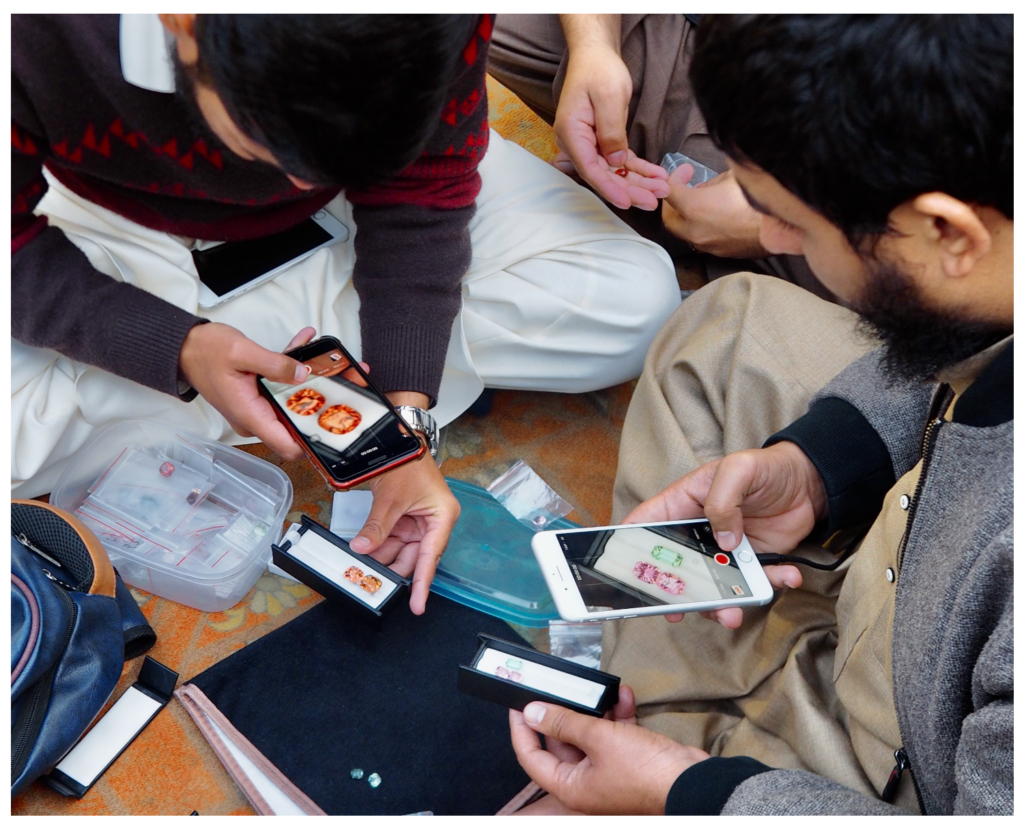
Skardu’s Rundu Gems Market is quiet and relatively comfortable compared to the typically noisy, dusty, and dirty downtown area. Most of the Skardu mineral specimen and rough business is conducted sitting cross-legged on a carpet, typically with local snacks and copious quantities if either milk tea or green tea. Some of the “shops” are nothing more than a prison cell-like concrete room with a metal door and a large padlock.
It was quite an eye-opener to step into these often dimly lit rooms and observe local dealers unwrap exquisite mineral specimens from their protective toilet paper and/or newspaper wrappings, revealing treasures worth tens of thousands of dollars to over US$100,000. With Skardu’s intermittent and highly unpredictable electrical supply, it was not uncommon to have cell phone flashlights turned on to continue inspecting and negotiating on mineral specimens and gemstone rough late at night.

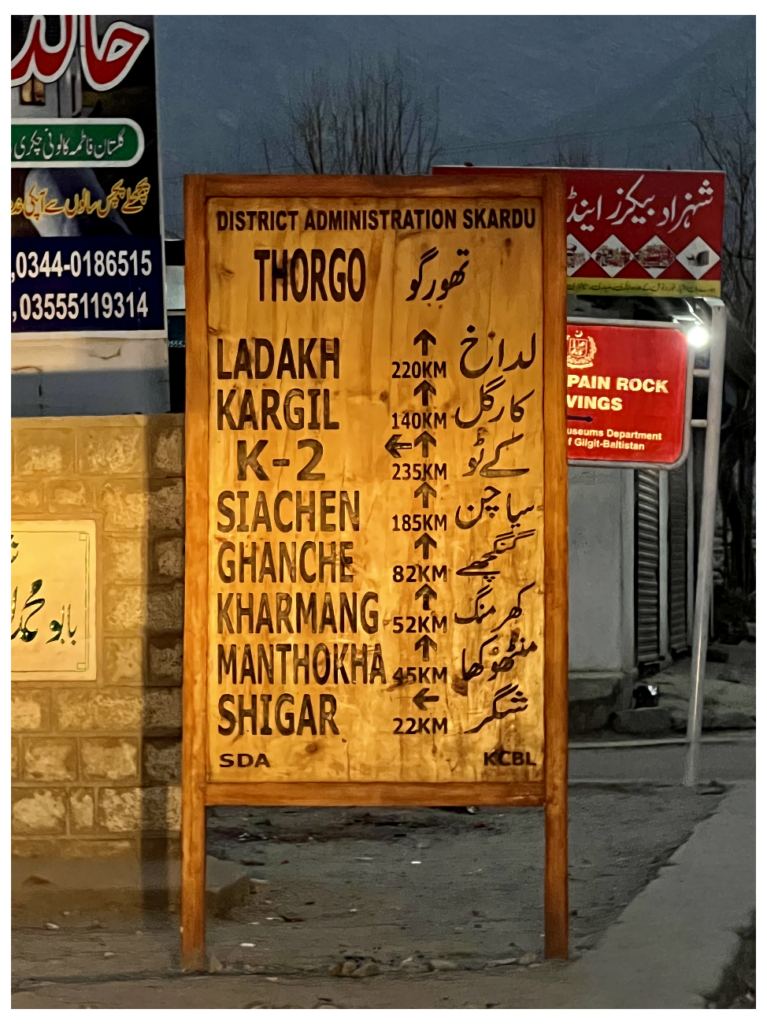
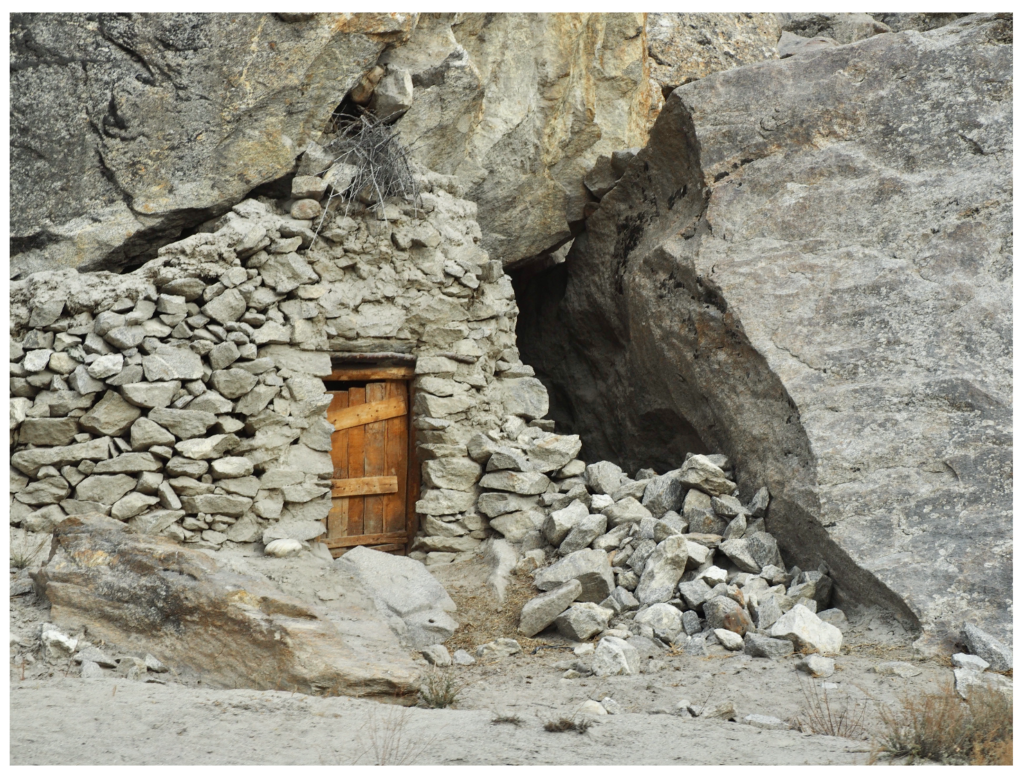
I am extremely grateful to my hosts Mohammad Ayub of Pretty Little Gem, Bangkok and Shah Khalid, CEO of Khalid Minerals, Peshawar for their overwhelming kindness and hospitality. And an extra special thanks to Shah Khalid’s 10 hours of skillful daytime and nighttime driving over rugged terrain, taking us from Skardu through the town of Shigar, and on to the source of the King of Kashmir, followed by a much appreciated long soak in a hot spring, and back to Skardu safely. Shukria!

The Sheraz Center emerald market in Swat is relatively upscale and modern compared to Peshawar’s Namak Mandi and Skardu’s Rundu Gems Market, perhaps due to the high cost of fine emeralds which attracts upscale buyers from around the world. Much of the well saturated vivid green and flawless small size Swat emerald rough winds up being precision cut for the high-end luxury Swiss watch industry.
The daily Swat emerald market rough auction is an often noisy and boisterous affair. A well experienced auctioneer stands behind a table surrounded by perspective bidders examining the parcel on offer. He shouts out the current offer, rising and rising in price untilbbidding stalls, then with a flurry of hand gestures and a shout, he announces the lots sold and the final bid accepted.
While I did not encounter any women working in Peshawar’s NamakMandi or Skardu’s Rundu Gems Market or Skardu’s Sheraz Center, it was refreshing to learn that Myne London’s lapidary workshop in Pakistan employs 80% women cutting Swat emeralds for manufacturing in fine jewelry! Additionally, Myne London donates 10% of all profits to The Myne London Foundation dedicated to helping girls access education and sport (Ref. 15).
Conclusion
While we did examine hundreds of kilograms of cuttable aquamarine, topaz, and tourmaline rough, the vast majority was destined for the growing mineral specimen collectors market.
Pakistan’s small domestic lapidary industry has many skilled cutters, so most of the fine rough unsuitable for mineral collector specimens gets snapped up by local traders before a foreigner like myself has an opportunity to purchase it.
Pakistan has a rich and diverse culture and history. Everywhere I went, I was warmly welcomed and often invited for tea or to share a meal together. On the entire journey, there was never a moment where I felt threatened or in any sort of danger.
References and Further Reading
01. Pala International – Pakistan’s Gemstones: An Overview. http://www.palagems.com/pakistanoverview (Accessed 16 December 2022)
02. Gubelin, E. (1982). Gemstones Of Pakistan: Emerald, Ruby, Spinel.Gems & Gemology Fall 1982 pg. 123-139. https://www.gia.edu/doc/Gemstones-of-Pakistan-Emerald-Ruby-and-Spinel.pdf (Accessed 16 December 2022)
03. Ministry of Planning, Development & Reform: Government of Pakistan (2019). Mineral Transformation Plan Vision 2025. https://www.pc.gov.pk/uploads/report/Cluster_Study_Gemstone_Mining_Gilgit_baltistan.pdf (Accessed 16 December 2022)
04. Wikipedia. Gemstones of Pakistan. https://en.wikipedia.org/wiki/Gemstones_of_Pakistan (Accessed 16 December 2022)
05. Rehman, H. Et al. (2021). Namak Mandi: Pioneering A Gemstone Market In Pakistan. Gems & Gemology Summer 2012 pg. 138-149.
https://www.gia.edu/doc/summer-2021-namak-mandi-poineeringgemstone-market.pdf (Accessed 16 December 2022)
06. Mindat. Mingora emerald deposit, Swat District, Khyber Pakhtunkhwa Province, Pakistan. https://www.mindat.org/loc-13756.html (Accessed 16 December 2022)
07. VisitSwatValley.com. (2022). Travel & Tour Guide Swat Valley 2022. https://www.visitswatvalley.com/swat-emerald/ (Accessed 16
December 2022)
08. Mindat. Skardu Area, Gilgit-Baltistan, Pakistan. https://www.mindat.org/loc-156271.html (Accessed 16 December 2022)
09. Trinchillo, D. (2020). Collecting The King Of Kashmir Aquamarine. The Mineralogical Record, volume 51, November–December, 2020 pg. 755-779. https://www.mardanifineminerls.com/wpcontent/uploads/2021/01/MR-51-6-Kashmir.pdf (Accessed 16 December 2022)
10. HMNS (2022). HMNS reopens Lester & Sue Smith Gem Vault with New Treasures After Renovation. https://hotinhoustonnow.com/2022/11/hmns-reopens-lester-sue-smith-gem-vault-with-newtreasures-after-renovation/ (Accessed 16 December 2022)
11. Malkani, M. (2020). Mineral Resources of Gilgit Baltistan andAzad Kashmir, Pakistan: An Update. Open Journal of Geology,10, 661-702. https://www.scirp.org/journal/paperinformation.aspx?paperid=101126 (Accessed 16 December 2022)
12. Agheem, M. H. et al. (2013). Shigar valley gemstones, their chemical composition and origin, Skardu, Gilgit-Baltistan, Pakistan. https://www.researchgate.net/publication/277384588_Shigar_valley_gemstones_their_chemical_composition_and_origin_Skardu_Gilgit-Baltistan_Pakistan (Accessed 16 December 2022)
13. Guo, H. et al. (2020). Inclusion and Trace Element Characteristicsof Emeralds from Swat Valley, Pakistan. https://www.gia.edu/doc/Fall-2020-trace-elementcharacteristics -emeralds.pdf (Accessed 16 December 2022)
14. Makki, M. (2017). Pakistan’s Swat Valley Emeralds – Consigned to Oblivion. https://www.sustainablegemstones.org/blog/pakistansswat-valley-emeralds-consigned-to-oblivion
15. Zaidman, E. (2022). Myne London: Sourcing Emeralds with a Mission. Gems & Gemology Summer 2022, Vol. 58, No. 2 pg. 254, 255. https://www.gia.edu/gems-gemology/summer-2022-gemnewsmyne-london
16. ABS (2016). Emeralds https://www.abscpec.com/content/Emerald.php
